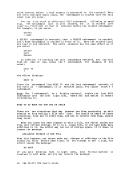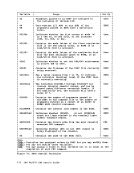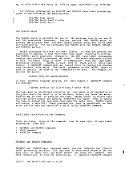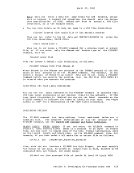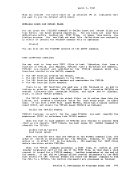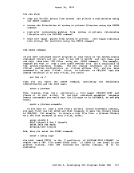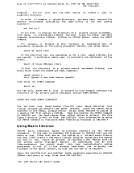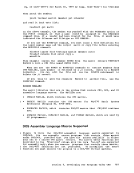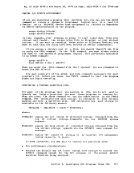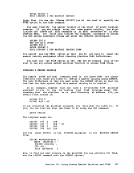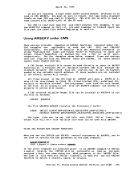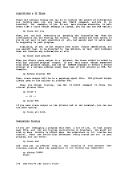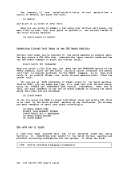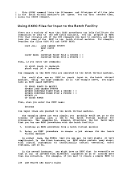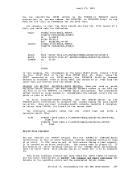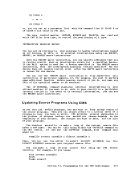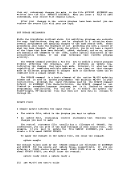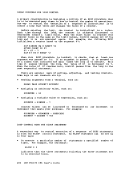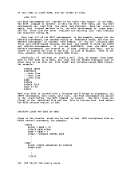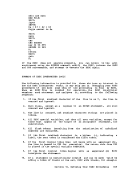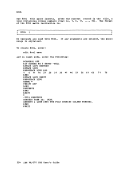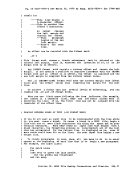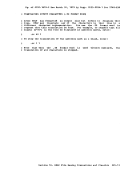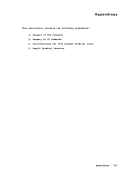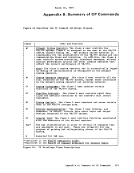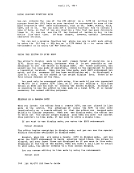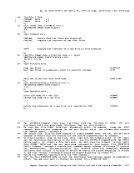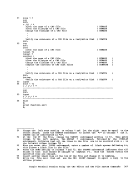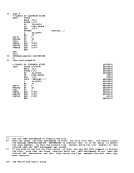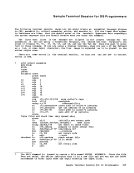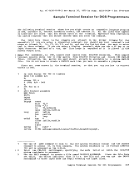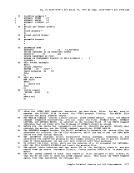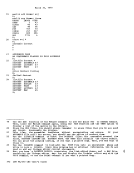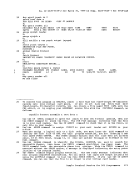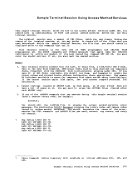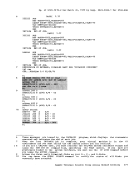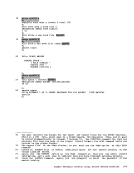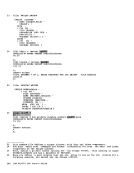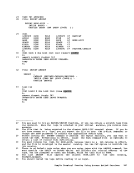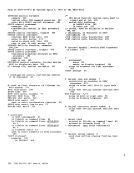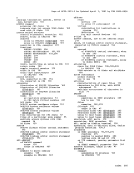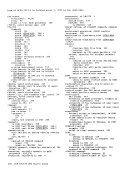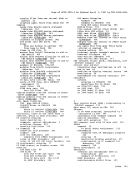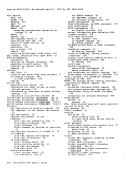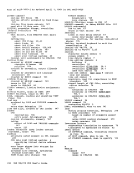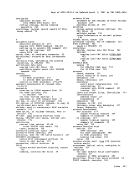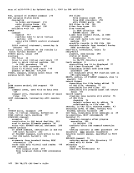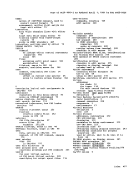Pg. of GC20-1819-2 Rev March 30, 1979 by Supp. SD23-9024-1 for 5748-118 An easier way to enter the CP environment is ty pressing the Pll key. Whenever you press this key, your virtual machine is placed in a CP BEID status, and you can enter any CP command. From the CP environment, you must use the CP command BEGIN to resume execution of your virtual machine. HALTING SCREEN DISPLAYS When your terminal is displaying successive screens of output froa a
program or aCMS command, you can use the HT or HI I.aediate commands to
halt the display or the execution of the command, respectively. If your
terminal is writing the informationmay have
difficulty entering the HT orHX command. In these circumstances, you
can use thePAl key --REQ key on a 3278 Bodel 21 -- or press the Enter
key twice to force your terminal to a CP READ status. Then, you can use
theCP command ATTN or REQUEST to signal a virtual machine When the screen status area indicates VM READ, you can enter HX or HT.
Using theeMS Editor with a 3270 The CMS editor has a special format and operation, called display mode, that makes editing CMS disk files with a 3270 aore convenient than on a
typewriter terminal. It uses most of the display screen, and, depending
on the terminal type and model, displays, depending upon theterminal type end model, up to 38 lines of a file at once. In addition to
displaying data lines of the file, the editor also indicates, on the
topaost line of the screen, the filename, filetJpe, record foraat, and
logical record length of the file being edited, as well as showing your
current mode: input or edit. The format of the screen is shown in
Figure 29.
The screen lines that you are most concerned with while editing are
the current line, the user input area (the bottomtwo lines), and the
editor's message line (the second line from the top) inwhich the
editor's responses and error messages are displayed. The current line
and the editor'smessage line are highlighted. When you first invoke the editor to edit a file, whatever is
currently on the screen (including your EDITcom.and line) is erased and
the full screen is controlled by the editor. The current line pointer
is positioned at the top of the file, the top part of the display screen
appears blank. The editor displays the characters"TOF:" and "EOP:" to
indicate the top and end of the file, respectively.ENTERING EDIT SUBCOMMANDS When you enter an EDIT subcommand into the user input area and press the
Enter key thesubcommand is not displayed on the screen, but the change
(or line pointermovement) is reflected in the screen display. If you
enter asubcommand that moves the current line pointer, all of the lines
on the screen are shifted up or down, according to the action taken by
the subcommand.
If you use theINPUT subcomaand to enter input lines, the edit status
field indicatesINPUT; all of the lines that you enter are placed in the
file and appear on the screen as the current line. (Entering input
lines from a remote3270 is somewhat different. The following "Editing
on a Remote3270" discusses the differences.)
344IBM VM/370 CMS User's Guide
program or a
halt the display or the execution of the command, respectively. If your
terminal is writing the information
difficulty entering the HT or
can use the
key twice to force your terminal to a CP READ status. Then, you can use
the
Using the
typewriter terminal. It uses most of the display screen, and, depending
on the terminal type and model, displays, depending upon the
displaying data lines of the file, the editor also indicates, on the
topaost line of the screen, the filename, filetJpe, record foraat, and
logical record length of the file being edited, as well as showing your
current mode: input or edit. The format of the screen is shown in
Figure 29.
The screen lines that you are most concerned with while editing are
the current line, the user input area (the bottom
editor's message line (the second line from the top) in
editor's responses and error messages are displayed. The current line
and the editor's
currently on the screen (including your EDIT
the full screen is controlled by the editor. The current line pointer
is positioned at the top of the file, the top part of the display screen
appears blank. The editor displays the characters
indicate the top and end of the file, respectively.
Enter key the
(or line pointer
enter a
on the screen are shifted up or down, according to the action taken by
the subcommand.
If you use the
field indicates
file and appear on the screen as the current line. (Entering input
lines from a remote
on a Remote
344

























































































































